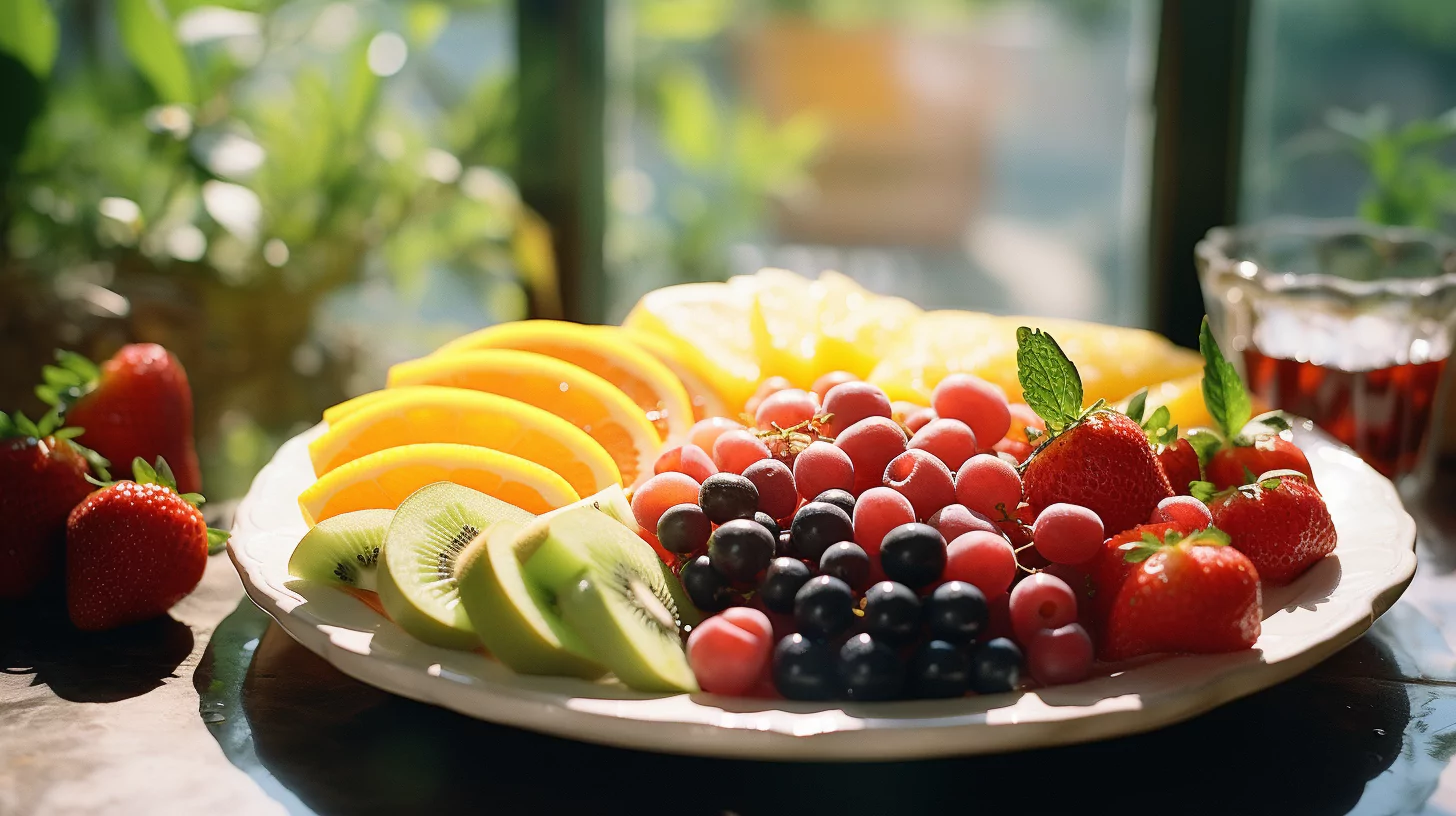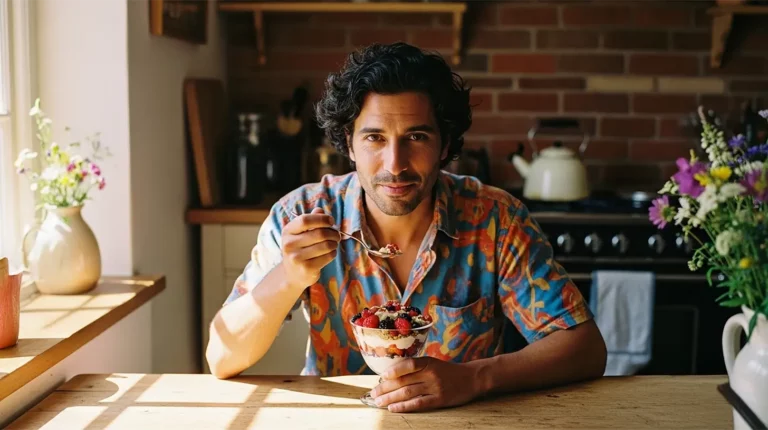Atkins, South Beach, Keto, Paleo, 5:2, and what have you… Chances are, you (or someone you know) have tried one or two of these diet fads.
Unfortunately, the results often don’t meet expectations. You may even struggle with the yo-yo effect. And you just might throw in the towel because, let’s face it, there’s no way any of these diets help with losing weight permanently.
“People don’t fail diets,” says Eric Edmeades, creator of WILDFIT. “Diets fail people.”
Surely, there’s a better option than this toxic diet culture. Good news: there is.
It’s an approach called intuitive eating (or what Eric refers to as “food freedom”). And here’s where you can explore the intuitive eating principles to change your relationship with food for good.
The love-hate relationship with food
“Many of us have been taught to choose to eat foods that we enjoy the most, not necessarily the foods that we need the most,” explains Eric.
Celebrating someone’s birthday? There’s a cake.
Throwing a Super Bowl party? Order some pizza.
Just broke up? Bring on the ice cream.
Comfort foods are the backbone of your food devil’s whisper campaigns. You know, that familiar yet manipulative voice in your head whispering sweet nothings: “You’ve been so good, you deserve that fudge brownie” or “Go ahead and have that deep-fried Snickers—it’s just this one time.”
Even if your food angel comes in to stand up for what’s right, sometimes, it’s just too hard to ignore the whispers. The devil doesn’t always show up in a red cape and pointy horns; he sometimes comes disguised as a big, juicy burger or a sweet, rainbow-sprinkled donut.
The love relationship with food
Let’s say, hypothetically, you did give in to those wicked whispers. When do you start feeling better? Is it after the first bite? Or is it when you smell the food? Or do you feel better the moment you give yourself permission to indulge?
“It was never the food that made you feel good,” Eric explains. “It was the permission and the rebellion.”
As soon as you allow yourself permission to rebel, you release serotonin and dopamine and you start feeling good. Your brain links food to mood. That’s when we have a love relationship with food.
The hate relationship with food
Now, in the high of these feel-good hormones, you eat the food—pizza, ice cream, whatever it is you choose—and how do you feel about it afterward?
A common response would be “bleurgh…” Because comfort foods are only good for just that—comfort, momentarily.
So now, you’ve come down from the high. There can be some negative emotions that come along with it—shame, guilt, anger, and anxiety.
These tricky emotions often lead you back to eating to feel good again, with the possibility of it turning into a vicious cycle or leading to health problems like obesity. Listening to the devil doesn’t come without consequences, after all.
When they’ve gone so far down the hole, many people often turn to dieting as a quick fixer-upper. Fortunately, there is an alternative to dieting—it’s intuitive eating.
What is intuitive eating?
The term “intuitive eating” was coined by two dieticians, Evelyn Tribole and Elyse Resch in their book, Intuitive Eating: A Revolutionary Diet Approach.
“Oh, no, not another diet,” you may be thinking. Understandable, considering the four-letter word can send any weight loss-seeking person down an unmotivated spiral at the mere sound of it.
That’s only because we’ve been taught that “diet” means—in Eric’s words—“temporary alteration with some level of restriction and suffering in order to achieve a short-term health target or to fit into some special outfit for a special occasion.”
The truth is, every organism on earth has a diet. And what it really means is “way of life.” It’s the way you live every day. And in a nutshell, that’s what intuitive eating is all about.
It shifts the focus away from body weight to well-being. It discourages the diet culture of “bad” or “forbidden” foods. And it promotes unconditional permission to eat when and what you want.
Moreover, eating intuitively is about being adaptive. That means your body’s energy has different needs based on a number of factors, like hormonal changes, physical activity, stress levels, and so on. So, if you feel hungrier more often the week before your period, it’s your body telling you it needs more energy.
The bottom line is, intuitive eating attunes your mind and body to the foods you eat every day. It’s an eating lifestyle that helps sustain your optimal health.
Are there benefits to intuitive eating?
Research on intuitive eating has increased over the years. Here are three that have been found to benefit the mind, body, and soul.
- A 2013 literature review looked into the relationship between intuitive eating and health indicators. They concluded that this method helps with weight maintenance, psychological health, and possibly physical health indicators, like blood pressure and cholesterol levels.
- In a 2019 qualitative study, the researchers examined women’s experiences of learning to eat more intuitively. While weight loss was a result for some, there were participants who also became “more compassionate with themselves, and accepted and valued the functionality of their bodies.”
- This 2021 study looked at the psychological characteristics that tend to be present in those who eat intuitively. The analysis found that intuitive eaters are less likely to have destructive patterns, like binge eating and purging, restricting their eating, and eating for emotional reasons or in response to external cues.
They are, however, more likely to appreciate their own bodies, have good self-esteem, have social support, and experience general well-being.
How is it different from mindful eating?
Both concepts sound like they can be used interchangeably. But what’s the difference between mindful eating and intuitive eating?
Mindful eating
Mindfulness is “the practice of maintaining a nonjudgmental state of heightened or complete awareness of one’s thoughts, emotions, or experiences on a moment-to-moment basis,” as Merriam-Webster defines it.
So when it comes to mindful eating, you’re consciously maintaining an “in the moment” awareness of what you eat and drink without judgment. It’s about how the food makes you feel as well as the taste and satisfaction—a food experience, so to speak. However, it doesn’t hold that unconditional permission to eat when and what you want.
Intuitive eating
Intuitive eating, on the other hand, is a broader concept. It’s about understanding your body’s nutritional cues. Using your instincts, emotions, and rational thinking, you honor your hunger and fullness without judgment.
This only works if you tap into your intuition. It requires deep listening as well as trust and patience in your body to give you the signals.
That’s why the foundation of intuitive eating revolves around not only nutrition but also behavioral psychology. And according to Eric, in order to achieve true food freedom, it’s worth looking into the root cause of your relationship with food.

What are the intuitive eating principles?
In their book, Intuitive Eating: A Revolutionary Diet Approach, Evelyn and Elyse outlined 10 intuitive eating principles. And of the 10, there are three essential ones that should be highlighted:
1. Honor your hunger
This is where trust in your body plays a huge role. Sure, your cravings may say “I want” like a toddler throwing a tantrum, but your body’s a whole lot wiser.
It’s biologically wired to tell you when it needs sustenance. And your job is to feed it with adequate energy and carbohydrates.
Unfortunately, dieting (and even disordered eating) has long convinced us to ignore our body’s hunger cues.
Hungry? Drink water, chew some gum, or go for a walk instead.
But when you end up getting to “hangry” mode, it’s never a pretty sight. You end up overcompensating, going past the adequate amount your body actually needs, and overeating.
2. Feel your fullness
Like honoring your hunger, it’s important to listen to the signals when your body’s full. And even though you can have a slice of salted-caramel cheesecake after a huge main meal, it doesn’t mean you should.
One tip that may help follow this intuitive eating principle: pause in the middle of eating and be mindful of how the food tastes as well as your current hunger level.
3. Make peace with food
Food is not the bad guy in this situation. And, as a matter of fact, neither are you. So give yourself unconditional permission to eat.
If you give in to the food police and refrain from eating certain foods, it advocates the diet culture. And when you give in (no thanks to the food devil), it’ll most likely lead to overeating and guilt.
So show kindness to yourself. When you’re aware of the conversations you have with yourself and your body, you’ll begin to have the consciousness to do something about it. And that will help make it easier for you to follow this intuitive eating principle and make peace with food.
Food freedom awaits
Interestingly, losing weight and improving physical appearance continue to be the top reasons Americans follow a diet or eating pattern, according to a 2021 survey conducted by the International Food Information Council. But those are only short-term solutions.
The key to creating a lasting change you want to create is to change your diet, not go on one.
— Eric Edmeades, trainer of Mindvalley’s WILDFIT Quest
We all want to live the food freedom dream—to eat what you want when you want, and to not eat when you don’t want to eat. The way to do so is to follow the intuitive eating principles.
And Mindvalley’s WILDFIT Quest can help you do so. Guided by Eric himself, you’ll learn to free yourself from old habits and cravings and get you to a place where you feel free enough to take the food or leave it.
Ready to change your relationship with food for good? See you at Mindvalley.









